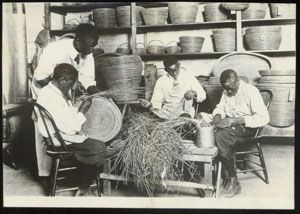A new chapter in Baptist life has been unfolding this month as freedmen on St. Helena Island off the coast of South Carolina, under the protection and with the assistance of the United States Army, form an autonomous Baptist congregation and establish a Baptist-related school, the Penn School. The school teaches reading, writing, agricultural and trade skills to freedmen.
The freedmen are given much latitude on the island, and are in the early stages of learning how to govern themselves.
Southern whites, however, are not appreciative of their former slaves exercising their newfound freedoms. Today, Confederate “rebels” attempt an invasion of the island.
Report of Brig. General Rufus Saxton, U. S. Army.
BEAUFORT, S. C., October 26, 1862.
GENERAL: I have the honor to report that on Friday last two boat loads of rebels attempted to land on Saint Helena Island, and were fired on and driven off by negro pickets. The people there are somewhat alarmed. I respectfully request that a picket guard of a non-commissioned officer and 12 men be sent there to give confidence to the people.
I am, general, with great respect, your obedient servant,
R. SAXTON,
Brigadier-General, Volunteers.
Major-General MITCHELL.
Many, perhaps most, of the freedmen living along the Union-controlled South Carolina coast are Baptists. Now free from their masters, in the weeks and months ahead they increasingly explore their faith and learn how to establish and maintain congregations without the oversight of white masters and pastors. Although the war is far from over, the experiment along the South Carolina coast is providing a model for how freedmen will establish their autonomy throughout the South once all Africans are freed and the Confederacy is subdued.
Sources: “Affair on Saint Helena Island, S.C.”, United States War Department. The War of the Rebellion: A Compilation of the Official Records of the Union and Confederate Armies. Series I, Volume 14. Washington: Government Printing Office, 1880-1901 (link); “Grass Roots African Origins of an American Art,” National Museum of American Art, including photo (link); Penn School Historic District (link)



